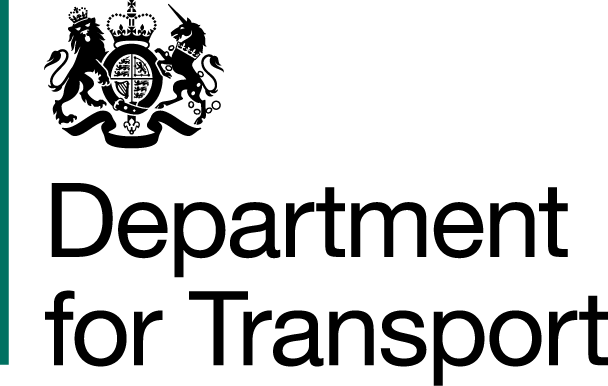TfW Autumn Interim Investigation Summary January 2019
1. Introduction
The Transport For Wales (TFW) fleet experienced a high number of wheel flats during November 2018 resulting in an excessive number of units being taken out of service. To investigate the root cause, TFW have appointed Metropolitan Railway Consultants Ltd (MRCL), a specialist in wheel-rail interface to work with the TFW Rail Services engineering team and Network Rail. The objective of the investigation is to identify the root cause, and recommend short- and long-term measures to minimise the risk of flats being developed.
Wheel flats are caused by a number of different mechanisms therefore determining the root cause can be complex, requiring detail analysis of all factors that might lead to cause of flats. This executive summary document describes the possible causes, work that has been carried out to-date, facts established to-date and what needs to be done to determine the cause.
2. Problem
The investigation so far has revealed:
- The wheel flats on TFW fleet were present in all classes of rolling stock but more prominent on Class 150, 153 and 142.
- There was a significant increase in number of flats between 5th & 23rd Nov 2018 compared with same period in 2017, which broadly corresponds with an increase in reports of low adhesion. There was also a noticeable increase in November 2017 compared with same period in 2016.
- Some wheel flats were caused soon after wheels were re-profiled.
- TFW fleet does not generally have wheel slide protection (WSP), which increases risk of wheel slip under low adhesion conditions. Furthermore, units have manual sanding that is used to deposit sand on rails when low adhesion is noticed by the drivers. The problem with manual sanding is that it can sometimes be activated too late after the wheel has experienced slip.
- Network Rail’s Autumn report shows a significant increase in low adhesion reported between 12th and 18th November in 2018 (65% increase in reports of low adhesion from train crew). This coincides with the period with increase in wheel flats on TFW fleet.
3. Potential causes
There are a number of reasons for wheels to develop flats including environments, operational or mechanical faults. The potential causes can be summarised as follows:
- Presence of contaminants between wheel and rail causing low adhesion including presence of vegetation, leaves, oil, grease, brake dust etc.
- Atmospheric conditions
- Absence of Wheel Slide Protection (WSP) and use of manual sanding
- Driving technique and brake set up and potential contaminants between brake blocks and wheels
- Large wheel diameter differential
4. Work so far
The investigation so far has established a number of facts, as listed below, after a comprehensive review of relevant data:
(table showing tasks completed and facts established for each task; represented in text below)
1. Tasks completed
Review effect of weather (storm etc in November).
Review overall wheel flat data.
Facts established
- NR data shows period 12th – 18th November was bad for low adhesion. This is within the time window for increase in flats.
- NR data shows leaf fall in 2018 was similar to 2017 but there were two spikes in data for low adhesion reports between 12th and 19th November 2018.
2. Tasks completed
Review On Train Monitoring Recorder (OTMR) output from a number of vehicles with wheel flats
Facts established
OTMR download from a number of vehicles with flats have revealed high levels of braking (step 3) at high speeds for operational or safety reasons. This could cause slide under certain conditions. Drivers may need additional tools and support to help during poor rail head conditions. This may also apply to other operational situations.
3. Tasks completed
Review shapes of flats
Facts established
Shape of flats indicate combination of slide (during braking) and slip (low adhesion) as the causes.
4. Tasks completed
Review NR report re vegetation removal and low adhesion
Facts established
- A significant increase in reports of low adhesion compared with 2017 (64%). Note that the rulebook terminology had changed for 2018, but despite this reports of low adhesion from drivers increased. At this stage we believe that when inspected, 94% of low adhesion reported sites had little or no contamination.
- A number of areas where NR had prioritised de-vegetation still saw an increase in reports of low adhesion, despite less leaf contamination being found.
- The use of Adhesion modifiers was largely stopped in the limited areas where it was being use, water jetting continued in 2017. This is a potential factor within the scope of the ongoing investigation.
5. Tasks completed
Continue wheel monitoring
Facts established
Wheel flat count has slowed down significantly since 23rd November.
6. Tasks completed
Install video cameras on a Class 150 bogie & record images over 200+ miles of Valleys and Mainline routes. View and analyse all video images
Facts established
- Wheel-rail interface video covered a large proportion of South Wales. This also captured a wheel slide incident resulting in a minor wheel flat.
- The following factors were also revealed by the footage:
- Presence of low-level vegetation near the rails.
- Evidence of some fluid splashing on to the interface
- Litter/debris close to rail
- Some litter /vegetation migration on to the interface.
- Presence of dust at the interface, potentially brake block or other external sources.
A video commentary document has fully noted the above events, cross referenced with GPS location.
Image: Map of camera test run routes, showing sites with low adhesion and priority de-vegetation.
5. What to do Next?
It is noted that TfW is installing WSP on its fleet together with automatic sanding so that the effect of low adhesion can be minimised. It is understood that the fleet will have WSP fitted for Autumn 2019.
Further to this, in short term, the investigating team from TFW and Network Rail should consider the following actions:
- Continue monitoring wheels for flats. Investigate solutions to improve detection of flats as soon as possible Identify sources of significant fluids/dust in areas highlighted on video run.
- Continue to work with NR to address low adhesion in critical locations
- Continue to work with NR to find effective way to prioritise de-vegetation near track where it is most required, with consideration for whether de-vegetation is always the appropriate solution at every location.
- Establish if wheels with flats show a correlation to mileage.
- Review sample wheel profiles and diameters data for low, medium and high mileage wheels (since wheel turning).
- Determine track gradient in areas with low adhesion.
- Periodic video runs particularly when icy.
- Review driving policy and driver training with focus on driving under low adhesion conditions.



